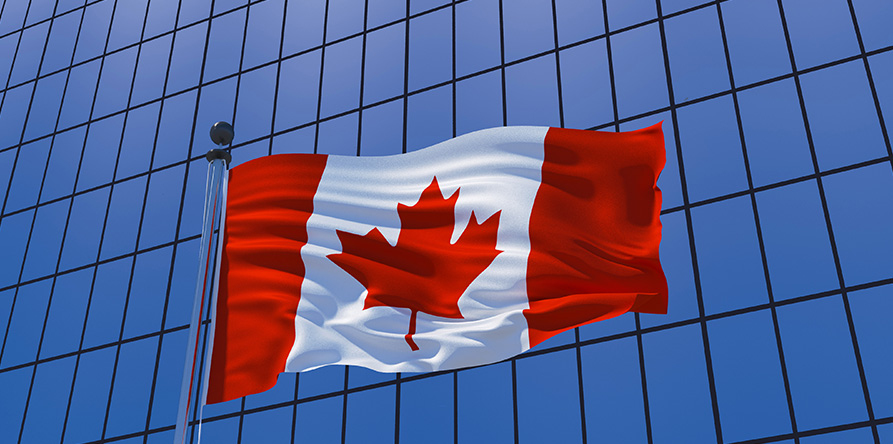
Why the Canadian banking system is world class
Canada’s banks were built to last.
If you want to keep your money safe, there are few better places to put it than in the Canadian financial system. While other countries have dealt with unexpected bank failures, Canadian banks continue to withstand those pressures.
Need proof? Consider how the country’s banking sector weathered the 2008 financial crisis. By many accounts, it didn’t just survive; its resiliency allowed it to emerge stronger than ever. During the darkest days of 2008, Canada experienced no bank failures, and required no bailouts.1 Then, as banks collapsed south of the border, the World Economic Forum declared Canada’s banking system the soundest in the world,2 just ahead of Sweden, Luxembourg, Australia and Denmark.
There have been 564 bank failures in the U.S. since 2001.3 Over the same period, Canada has had none. The last time a Canadian bank failed was 27 years ago, when the Calgary-based Security Home Mortgage Corporation was forced to close its doors in 1996.4
Are Canadian banks safe?
One of the reasons for Canada’s financial fortitude is that, from the beginning, the country has featured a system that favours a relatively small number of well-capitalized, well-regulated national banks with many branches. There are just over 80 banks in Canada, with the big six – the Bank of Montreal, the Royal Bank of Canada, Scotiabank, TD Bank, CIBC and the National Bank – holding 90% of the country’s deposits.5
The concentrated nature of Canada’s banks makes it easier for the Office of the Superintendent of Financial Institutions (OSFI), the industry’s regulating body, to understand their operations and keep a close eye on what they’re up to. OSFI’s regulations, which prioritize safety and soundness, encourage Canadian banks to take a relatively conservative approach that avoids any unnecessary risk.
The banking sector, concentrated as it may be, is also diverse. With services ranging from wealth management and brokerage services to insurance, deposits and loans, if one area of the economy struggles, the system as a whole is equipped to endure. And because the big six dominate the industry, they have access to a healthy flow of cash that lowers their chances of failure and removes the need to resort to riskier practices.
In the unlikely event a bank does go under, the Canada Deposit Insurance Corporation (CDIC) exists to ensure eligible deposits of up to $100,000 per account are protected at member financial institutions. (All the main banks are CDIC members.) Since it was created by Parliament in 1967, the Crown Corporation has stepped in to protect more than two million depositors from 43 bank failures. Not a single dollar of insured deposits was lost to Canadians.6 Use this link for a complete list of what deposits are considered eligible; it includes money inside chequing and savings accounts and guaranteed investment contracts.
A tale of two countries
Unlike in Canada, our southern neighbours have one of the most fragmented banking systems in the world. For most of its history, the country had restrictions in place that prevented banks from opening branches across state lines – and often within the same state. The country now has several thousand banks that are governed by a slew of different regulators depending on their charters.
The sheer number of financial institutions means individual banks feel compelled to take greater risks to differentiate themselves from the competition.7 Consequently, it becomes harder for regulators to oversee what these institutions are doing and to ensure that the interests of customers are thoroughly protected.
At its highest, roughly a century ago, the U.S. had around 31,000 financial institutions, or one for every small town in the country.8 When regional banks are only able to service small areas, they become far more vulnerable to failure than large, national institutions that aren’t tied to a single economy.
Canada’s banking system also features a level of separation not seen in the states. In the U.S., the central bank manages the economy and regulates the financial industry. Here, the Bank of Canada handles monetary policy and leaves the enforcement of banking rules in the capable hands of the OSFI. With fewer banks to monitor and a distinct separation of duties, oversight is invariably easier.
The bottom line
Canada’s reputation for financial stability is well earned and should continue to provide a sense of security – if not pride – to Canadians everywhere, no matter what the future holds. The big six have plenty of liquidity and manageable credit risks that allow them to survive the kind of economic uncertainty that can be catastrophic to other banks. The industry’s emphasis on stability over experimentation, and reliability over risk, allows it to remain a safe harbour in periods of turmoil and ensure that Canadians see only sunny skies after the storm.
Footnotes
1 Why Canada Didn't Have a Banking Crisis in 2008, NBER, nber.org
2 Canadian banks the soundest, CTV News, ctvnews.ca
4 Canadians almost lost all their savings in the bank failure of 1996, National Post, nationalpost.com
5 Why Canada’s Banks Remain ‘Stable and Resilient,’ The New York Times, nytimes.com
6 What Happens in a Failure, cdic.ca
7 The Silicon Valley Bank Failure: Why Banks Don’t Fail In Canada Like In The U.S., forbes.com
8 Once “too small to thrive,” now some banks are “too big to fail,” Marketplace, marketplace.org
